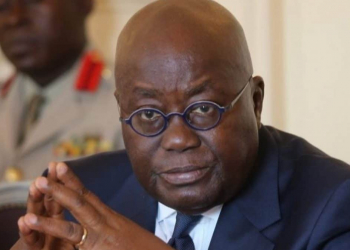Until recently, the Savannah Accelerated Development Authority (SADA) was an infamous spectacle of how bad management of public institutions can cost a nation and the citizenry.
Established in 2010 as a vehicle for the transformation of the savannah zone, SADA was prided by the late Prof. Atta Mills’ administration as the boldest and, possibly, the final initiative by a government to meet the development aspirations of that segment of the country.
But after two years of existence, with a seed fund of GH¢100 million at its beck and call, poor resource allocation and disregard to best practices in the corporate practices soon marred the good intentions that accompanied its establishment.
Fortunately, however, the institution has reformed itself over the past two years much to the admiration of its partners.
The SADA of 2016 was substantially different from the SADA of 2012 and 2013.
As of last year, a new board and CEO were in their second year of office. Thanks to the change in the management structure, the authority successfully beefed up its staff with transparently recruited professionals.
It had strengthened its financial accountability and administrative systems, changed its ways of working and offered to focus more on facilitating investments, planning and coordination rather than being an implementer.
As a result, development partners (DPs) quickly reposed confidence in the ‘new SADA’ and subsequently reversed their earlier decisions to keep a distance from its operations.
The Abugre factor
The renewed confidence of DPs on SADA was bolstered by the non-partisan nature of the authority’s CEO, Mr Charles Abugre.
A development economist with special interest in rural progress, Mr Abugre is seen as a man of integrity with a track record of delivery spiced by international experience.
In his two years as CEO, the authority has successfully embarked upon, and invested heavily in its innovative, exciting and ambitious master planning exercises and engaged multiple constituencies in the process, including all political parties.
Since late 2015, the authority has been busily preparing the various aspects of its master plans – the agricultural master plan, the SADA Zone Spatial Development plan, the Tamale City Development Master Plan among others.
These plans hold the key to the economic and social transformation of the poorer part of the country which accounts for 54 per cent of the land mass of Ghana.
Its agricultural master plan has virtually done all the background technical work that is needed for President Akufo-Addo’s administration to implement its irrigation agenda – the one village, one dam – and transform agriculture in general.
Also, the work that SADA has done with USAID to map investment profiles in all 63 SADA districts lays the ground for the NPP’s ‘one district, one factory agenda.’
The regional concept plan is also effectively an industrialisation strategy for the northern savannah.
Similarly, most of the ideas in the infrastructure plan developed by SADA have been substantially reflected in the NPP’s manifesto.
This is why a little meeting of minds between the government and SADA can help kick start development and job creation, where it is most needed.
Sober reflections
But to do so, the NPP, as a party, and the government need to now take a sober and second look at the work that SADA has done and the competences in the institution that can be harnessed and supported to deliver.
For a start, however, the government should speedily resolve three issues: the promised renaming of the institution, the re-drawing of the boundaries and clarification of what it means by ‘restructuring’ as promised by the President before, during and after the election.
While at it, one thing that comes to mind is the proposed change in the name of the authority.
Change of name
Although widely supported, one may ask if the change of name will add much to the speeding up of development to reduce the excruciating poverty and unemployment in the other half of our country?
While it is true that a change of name might be a good branding trick to breath in freshness and a new sense of belief, purpose and value to the authority to help inspire confidence, one must note that the change in name is more of a cost than value addition.
Think of the cost in time, money and man-hours that will be needed to draft appropriate legislations, per diems for rounds of parliamentary sub-committee meetings and other exercises relevant to amend the law that created SADA – Act 805, 2010 – before a name can be changed.
How about the cost of rebranding the materials already produced and complications of reviewing international agreements and contracts that the authority entered into with its DPs?
Then again, will the change of focus from savannah to ‘northern’ serve the interest of the country in general?
Generally speaking, the savannah is an ecological construct and conveys less emotive connotations. Northern, on the other hand, which refers to the Northern, Upper East and Upper West regions, has clear historical, geopolitical and ethnic connotations.
It carries with it a lot of emotions.
Thus, will it help or hinder that this emotive boundary be entrenched, whereas the planned Middle Belt and Coastal Belt authorities are clearly defined in much less entrenched way?
Perhaps, rather than ‘Northern’, we might use ‘North Development Authority’, a more loose definition that could retain the current SADA Zone boundaries.
After all, there is a compelling logic to keep them together – they share a drier ecology, culture and traditions as well as levels of development.
These shared conditions explain the necessity for joint planning and coordination.
Accelerating development
What is the implication of an NDA without the word accelerated? The justification for SADA lies in the word accelerated – the need to take preferential steps to speed up development in a part of the country that lags behind.
This is rooted in the 1992 Constitution and a shared desire for equitable development.
It is also a recognition that tremendous resources in that half of our country lie relatively wasted and unutilised for growth.
Lifting that part of the country – the Northern Savannah – will lift Ghana’s development.
While every part of Ghana needs accelerated growth, this part of the country needs it even more.
In accelerating growth and development, we must also be mindful of the fragility of the environment of this part of our country – a dry land savannah that holds a threat for increasing desertification and reduction of Ghana’s water resources, given that the bulk of the Volta River’s main basins are located there.
Thus, protecting these basins would amount to protecting Ghana.
This is where treating the Northern Savannah as one entity is key; it allows for the country to tackle several threats together – underdevelopment, the environmental and security.
If boundaries have to be withdrawn, it might make more sense to add more drier areas, especially in the Ashanti and Brong Ahafo region to SADA or perhaps “The Accelerated Development Authority of the North” than to take districts away.
Conclusion
While change is necessary, given the impact it will bring to the institution, it is needless to say that the nature of the change that will be proposed has to be matured, considered and results oriented.
The change should focus more on expanding the geographic boundaries and properly resourcing the authority to implement its Master Plan and the government’s priorities, while strengthening its accountability systems.
If the government took this direction, there is no doubt that the results will be speedy and political dividends will be high.
But if it chose to be political, self-pleasing and bent on erasing the footprints of the previous administration as far as SADA is concerned, Ghana, the poor and the unemployed will have the most to lose.


